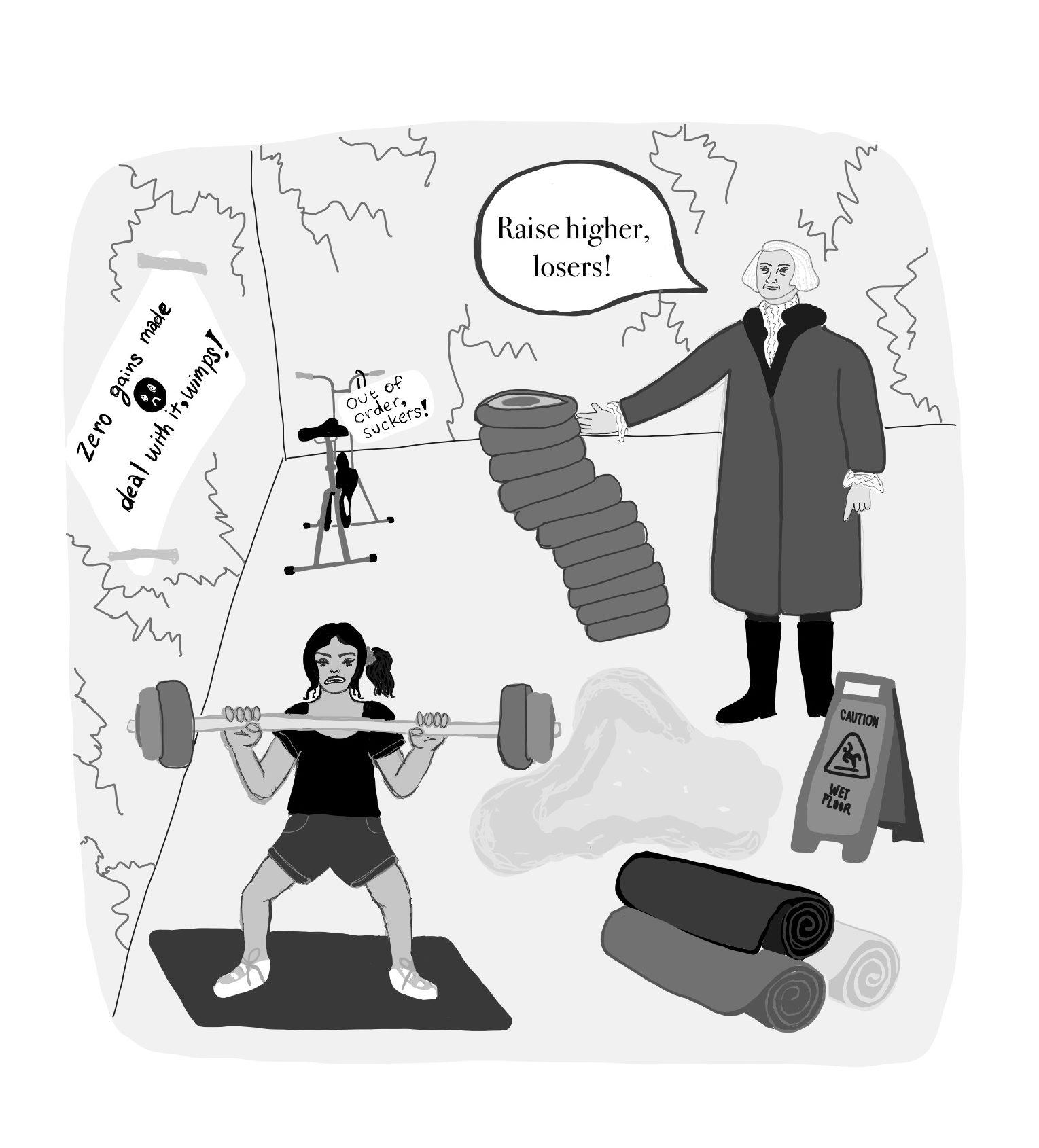As the Lerner Health and Wellness Center enters its fourth month of renovations, students interested in keeping up their physical health must choose between using GW’s makeshift fitness facilities or pricey, off-campus gyms. But GW didn’t need to throw students’ workout routines into disarray – officials announced that Lerner would close to complete this work nearly a year ago. With Lerner out of commission until mid-fall, GW ought to flex its institutional muscles to make sure students can access the equipment and facilities they need instead of leaving them with meager alternatives.
Although the closure allows officials to update Lerner’s equipment, redesign its layout and upgrade the building’s HVAC system, it has eliminated access to the building’s pool, gym, courts and work-out equipment since May and displaced student activities, like club sports and intramural teams. With Lerner closed, campus recreation staff have compiled a variety of ways to stay active – students can exercise in a workout room in the University Student Center or at the West Hall fitness center on the Mount Vernon Campus, walk or run around Foggy Bottom or pay to use local gyms. There’s also “Lerner on Demand,” a series of instructional workout videos on YouTube.
These solutions may sound good in theory, but they fall flat in practice. Students looking for free, on-campus facilities can use the student center workout room, but that’s a generous description for a nondescript conference-room-turned-gym with a handful of free weights, yoga mats, training balls, self-powered rowing machines and upright bikes. The West Hall fitness center offers more space and specialized equipment, but it’s only open from 8 a.m. to 9 p.m. Monday through Friday, 10 a.m. to 4 p.m. Saturday and noon to 8 p.m. Sunday. These limited and irregular hours, combined with the trek to the Mount Vernon Campus, hardly make it an appealing option for many students.
Walking or running around D.C. may provide an alternative to treadmill cardio but can’t replace strength training or a specialized workout routine in a dedicated space like Lerner. There’s also the possibility of using public courts and pools, but the time and money it takes to travel across town on the Metro, a bike, scooter or rideshare still means there’s a price tag attached to these nominally free options.
GW’s facilities and no- or low-cost alternatives aren’t meeting the needs of amateur athletes and fitness fanatics alike. They leave students in the position of paying out-of-pocket for memberships at local gyms, where costs can add up quickly, even with student discounts that knock a few dollars off a monthly membership.
The Active & Fit program – which gives registered students access to more than 7,900 gyms across the United States, including ones in the DMV – has a $29 per month membership fee. But that $29 fee is misleading because of the program’s two-month minimum. Add in taxes and fees, and it’ll set you back $87. Other gyms are still expensive, even without fine print trickery – VIDA Fitness’s annual membership costs $119 per month and Gold’s Gym charges between $24.99 and $39.99 on a biweekly basis.
If the student center and West Hall can’t offer the equipment that Lerner did, then private gyms can’t compete on price. Though in dire need of repair with its broken equipment and poor temperature control, Lerner offered a huge variety of equipment and activities at absolutely no charge. A reopened, reinvigorated Lerner can get back to supporting students, and we’re excited to see what officials do with the space.
But the promise of a new-and-improved Lerner in the future hasn’t helped students find alternatives to their usual workout routines in the present. If officials knew they would close Lerner for part of 2022 as early as last November, they could surely have developed a better plan to support students.

Jenna Baer | Cartoonist
With Lerner’s pool, courts and workout machines closed, the student center gym’s barebones equipment and the West Hall gym’s isolated location and limited hours can’t fill the gap Lerner left behind. Bringing in more equipment to the student center, especially for strength training, would make these gyms more functional and more appealing. While partnering with local gyms to reduce the costs of students’ memberships may be a brief financial burden for the University, it would ensure students could access the facilities they need and spare the University from creating gyms out of thin air.
And when Lerner does reopen, students deserve to be able to make up for lost time. To officials’ credit, the workout room in the student center is open from 7 a.m. to midnight seven days a week. Applying those same extended hours to Lerner – which has closed by 9 p.m. on weekdays, 4 p.m. Saturday and 8 p.m. Sunday – would allow students to make better use of the building’s facilities even as they juggle busy work and class schedules. And for the student employees who help run Lerner on a day-to-day basis, its smooth operation is key to their financial well-being.
Lerner is part of students’ lives. Whether they’re building up their stamina or creating bonds, Lerner is a source of community – and that’s something that students’ current fitness options can’t replicate. So while the renovations continue, GW should support students’ workouts, not sell them workarounds.
The editorial board consists of Hatchet staff members and operates separately from the newsroom. This week’s staff editorial was written by Opinions Editor Ethan Benn and Contributing Opinions Editor Riley Goodfellow, based on discussions with Research Assistant Zachary Bestwick, Sports Editor Nuria Diaz, Copy Editor Jaden DiMauro, Culture Editor Clara Duhon and Contributing Social Media Director Ethan Valliath.


